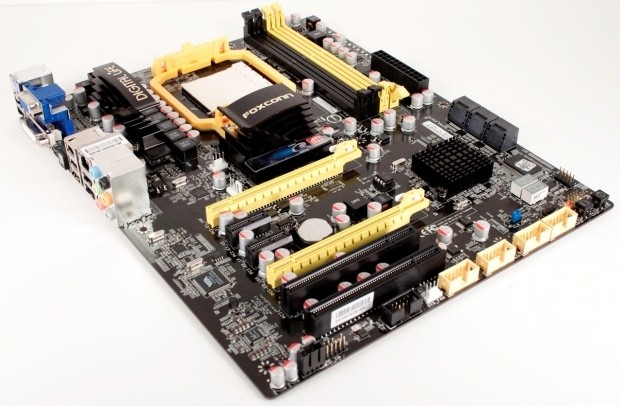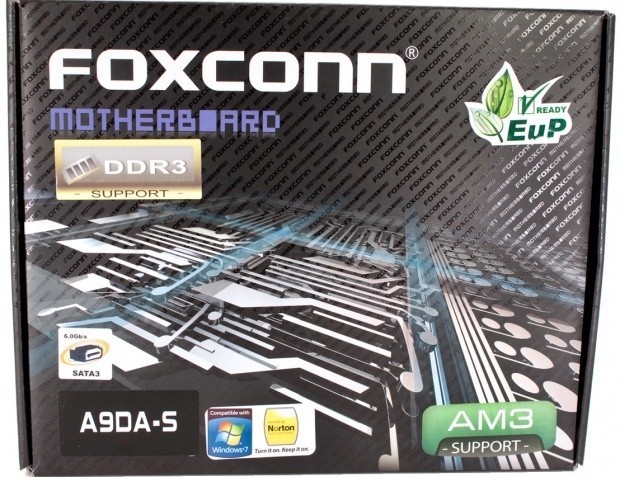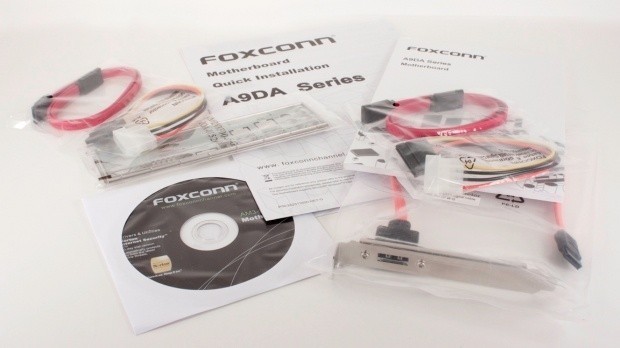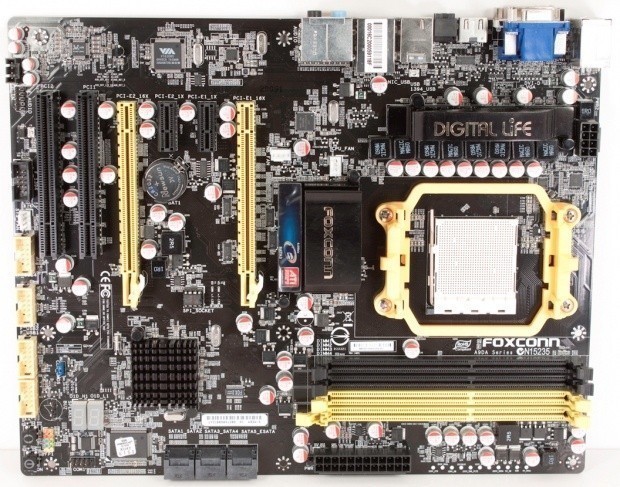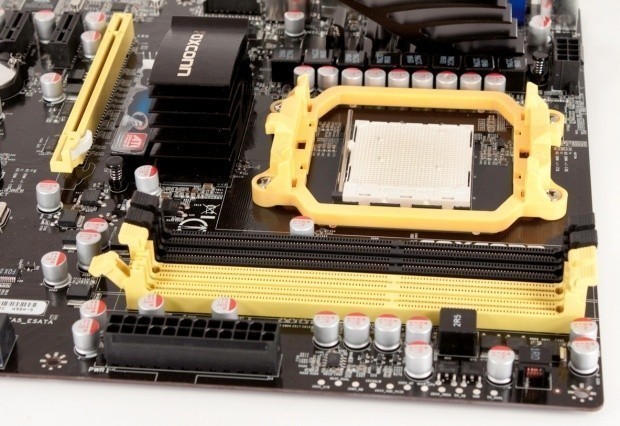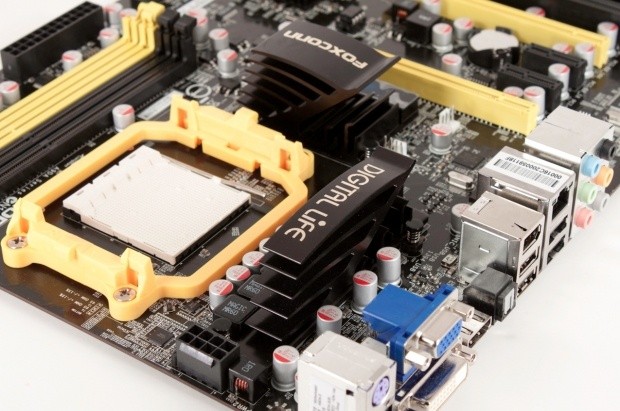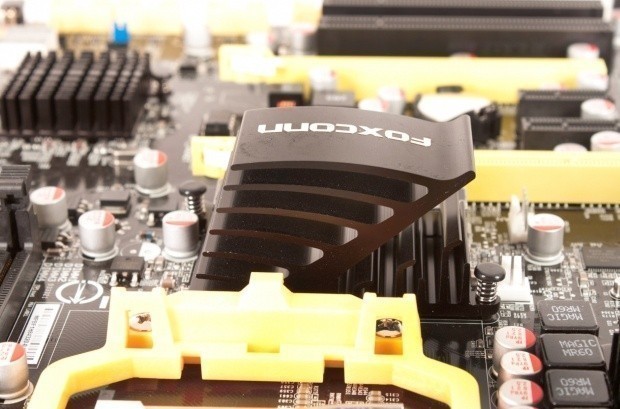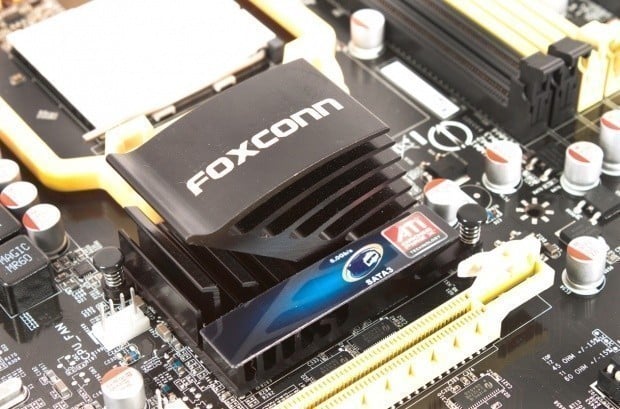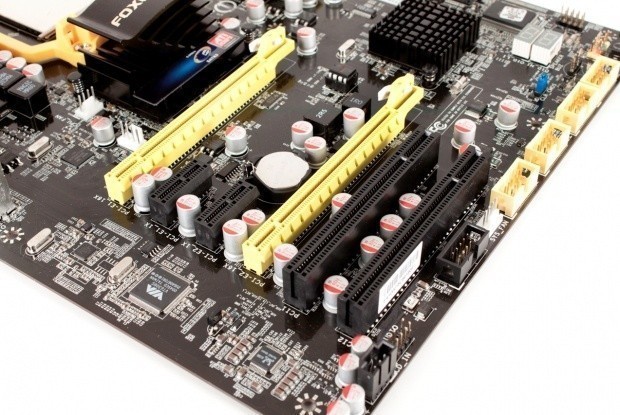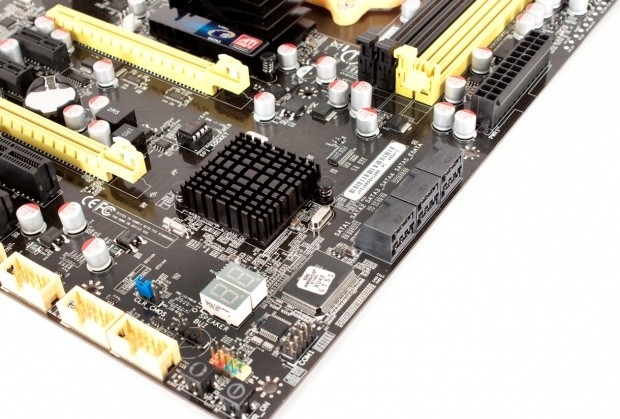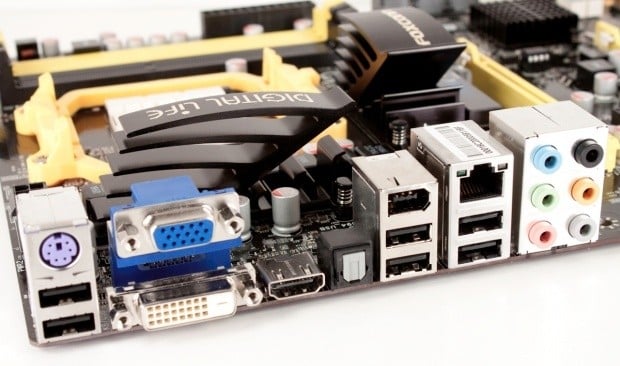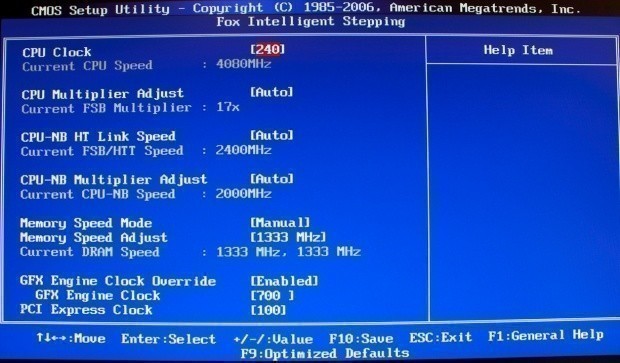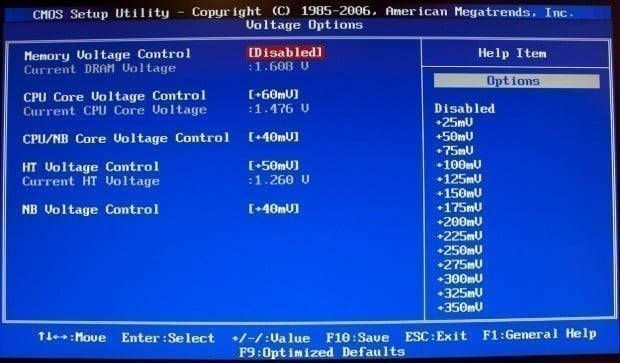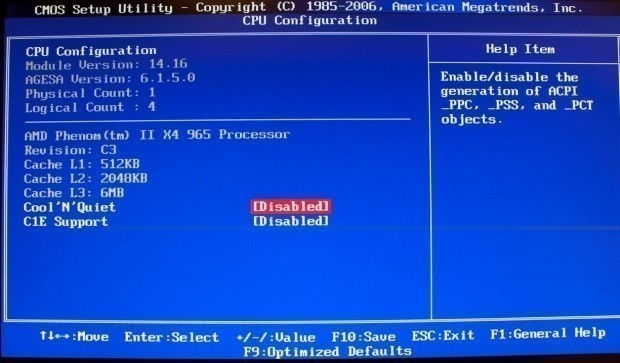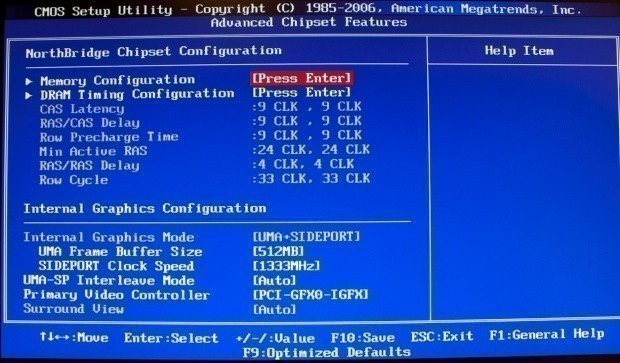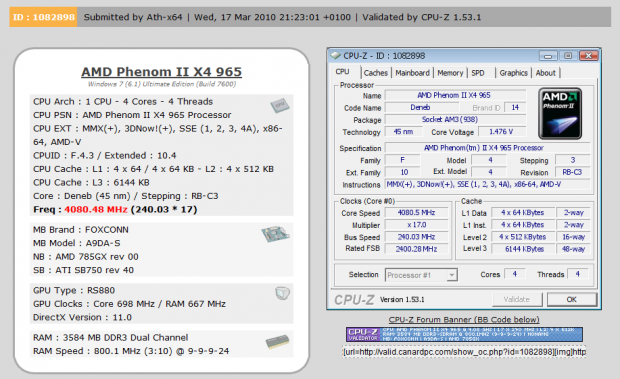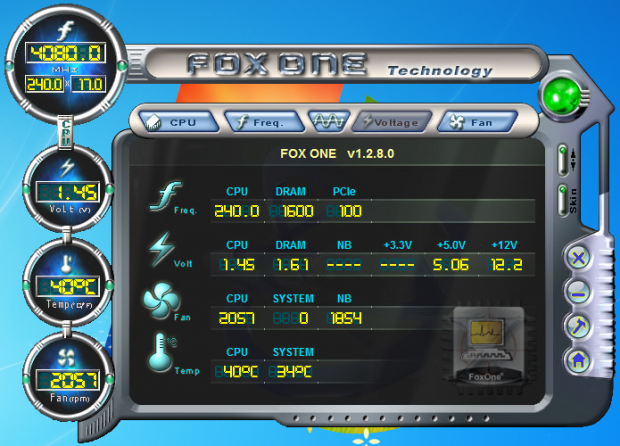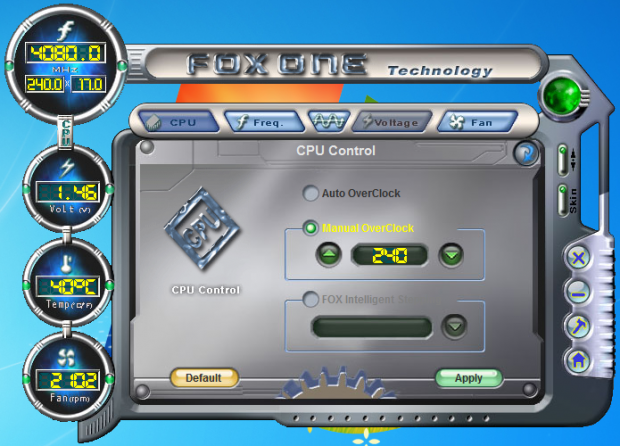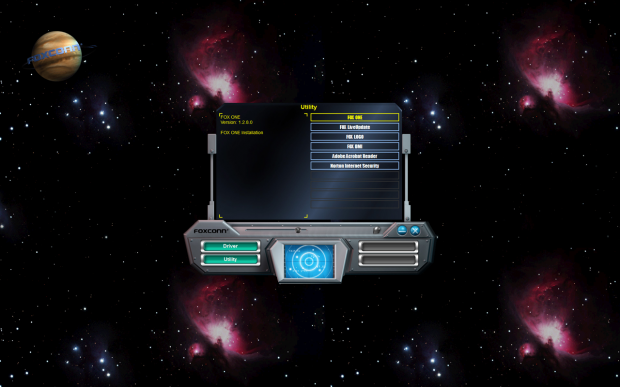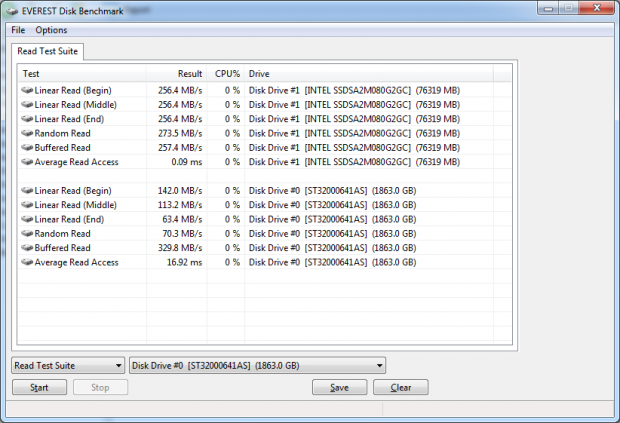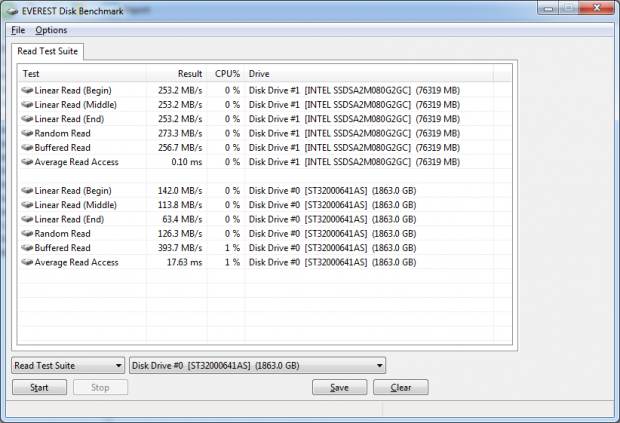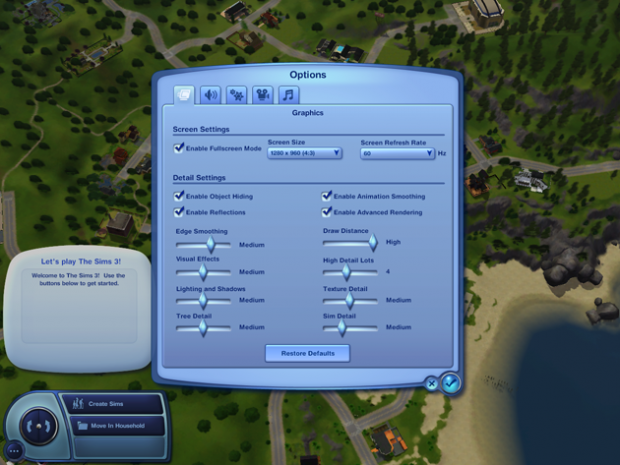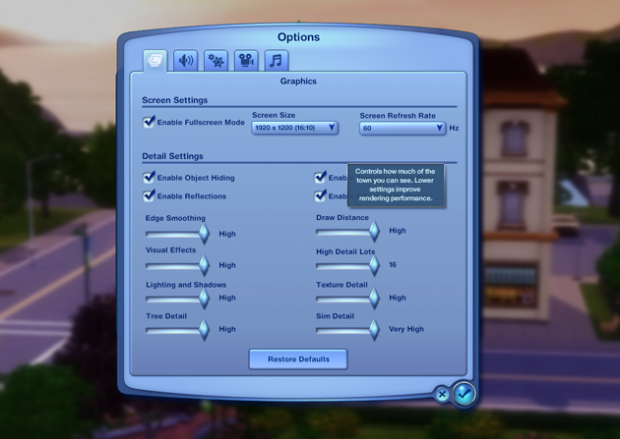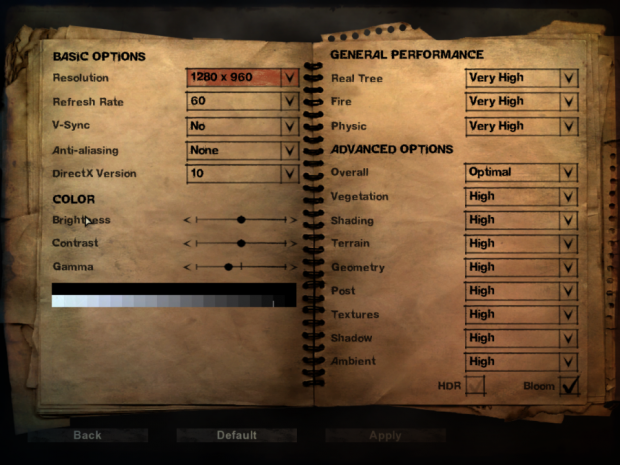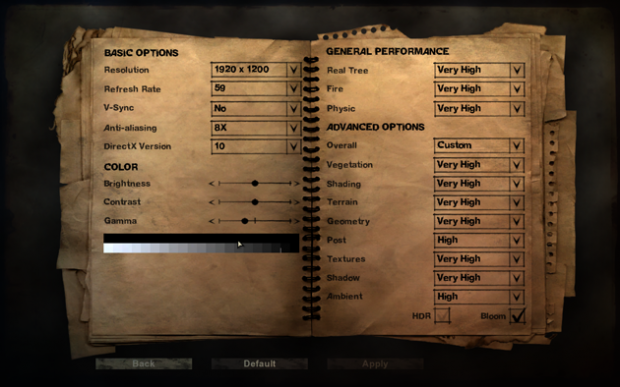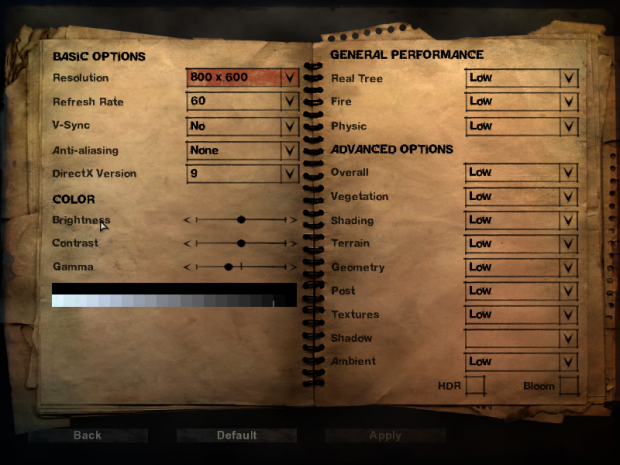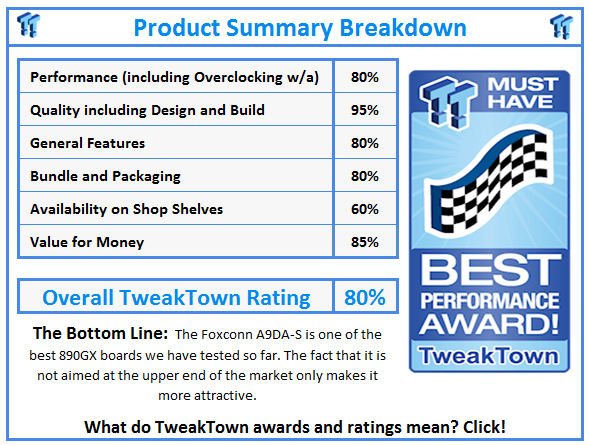Introduction
In the AMD 890GX chipset ball game we have Foxconn up to the plate. This board came as something of a surprise, but certainly not an unwelcomed one. The A9DA-S has the 890GX, the HD4290 and the SB850. However, it does not come with the NEC SuperSpeed USB controller.
Although USB 3.0 will not be on the plate, the Foxconn A9DA-S looks like it still might have a bit of flavour and probably for a good price. This will be one of the first Foxconn boards that I have taken a look at in a very long time. In fact, not since the days when Leadtek was rebranding and selling the Foxconn parts.
Still, I have to say that back then they made a good product. They were nothing fancy; just good solid boards. Let's see if they can follow that tradition with their current products.
The Box and What's Inside
The box that was sent to us looked like a re-labelled box, but turned out to be a generic box with stickers used to show the model that you are buying.
The back of the box gives us a glimpse into what Foxconn feels are the most important features of the A9DA-S.
Inside the box we find that the accessories are rather light compared to many other boards. This is not necessarily a bad thing as the less included loot, the lower the price should be.
The Motherboard
The Foxconn A9DA-S is a pretty cool looking board. With its black PCB and yellow slots and fan mount, I have to say that I like it. It is also not terribly cluttered. The heatsinks also add an element of style to the board.
As the A9DA-S follows the same ATX design used by almost every board out, we will break our trip around the board into two parts. The top portion of the board has all of the power connectors and regulators, as well as both the RAM slots and the AM3+ CPU socket.
The heatsinks for the 890GX Northbridge and the power regulators are very interesting. I am not sure how well they will work at keeping those parts cool, but they do have a nice look to them.
The lower half of the board is almost clean in comparison to some boards I have worked with. There are the same two (almost useless) PCIe x1 slots stuck between the two x16 mechanical slots (they only function at x8 for Crossfire). There are also two PCI 2.0 slots; one of these will not be usable if you have a dual height graphics card in the lower slot.
On the other side of the lower half we have the six SATA 3.0 ports, a set of diagnostic LEDs and a pair of buttons (power and reset). There is also a nice row of USB 2.0 headers.
The I/O ports are the typical ones you would find on just about any 890GX based motherboard (and just about any motherboard with an IGP).
The AD9A-S is a nice looking board; it has a decent layout (with some of the same issues seen on most ATX boards). Still, for some reason I think I like this one better than the others I have tested. There is just something about it.
Now, let's see if that "something" can follow us into performance.
BIOS and Overclocking
BIOS
The Foxconn A9DA-S uses another flavour of the AMI BIOS. This along with Award are probably the two most common BIOS templates on the market (although I am still seeing Phoenix from time to time).
For the overclocker or for anyone that wants to tinker with performance, you will want to hang out in the Foxconn Central Control Unit pages. In particular, you will want to be in the Fox Intelligent Stepping and Voltage Options area.
Although I like the rest of the board, I was not overly happy with the way the overclocking options were setup. I do not like using voltage offsets. I prefer to simply input the number I want and go.
The CPU Configuration page is something of a letdown. I was expecting all sorts of options on this page and only saw options for Cool N Quiet and C1E Support.
The Advanced Chipset Page was much more interesting with all of the settings for both your system memory and the IGP (with the exception of GPU Clock speed) present in a handy little spot.
Overclocking
Overclocking features are present on just about every board these days. I took a look at a server based motherboard and found that even it had options for tweaking performance that you would not normally see in an enterprise class product. However, even though almost everyone has overclocking capabilities, not every manufacturer does it right.
As I mentioned above in the BIOS section, the Foxconn method for overclocking settings are not the best that I have seen. They are a little awkward, especially for someone new to overclocking.
In the end we were not able to get much more out of our new C3 Stepping Phenom II X4 965 than we did on GIGABYTE's 890GX with a top clock of 4.08GHz (240 x 17). Anything over this caused all of our highly threaded applications to fail.
You can see the validation for our overclocking here.
*** Note: CPU-Z still shows the chipsets incorrectly as well as the DX version. The NB is the 890GX and the SB is the SB850. DX version is still only 10.1***
Also with the inclusion of overclocking for the masses comes the rush of Windows based overclocking tools. The Foxconn ones are a little hard on the eyes to be perfectly honest.
This aesthetic issue did not stop them from working, or providing all the information about our overclocked A9DA-S (even if you did have a headache after looking at it).
As all overclocking results are dependent on the hardware you use, your results may vary. Results of our overclocking tests are included in the performance section with the stock scores.
Important Editor Note: Our maximum overclocking result is the best result we managed in our limited time of testing the motherboard. Due to time constraints we weren't able to tweak the motherboard to the absolute maximum and find the highest possible FSB, as this could take days to find properly. We do however spend at least a few hours overclocking every motherboard to try and find the highest possible overclock in that time frame. You may or may not be able to overclock higher if you spend more time tweaking or as new BIOS updates are released. "Burn-in" time might also come into play if you believe in that.
Test System Setup and Comments
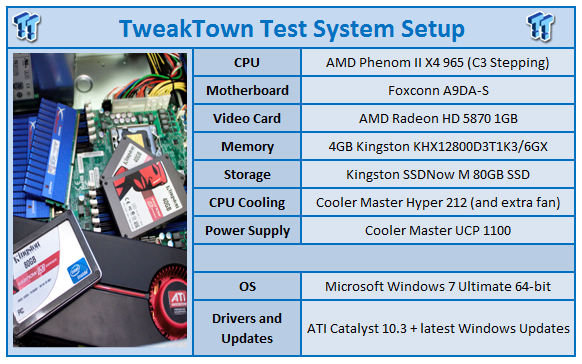
We would like to thank the following companies for supplying and supporting us with our test system hardware and equipment: AMD, Foxconn, Kingston and Cooler Master.
Comments
I liked the layout and the ease of build with the Foxconn board. I had no issues with the initial setup and even with the rather simple overclocking tools I was able to match our best clock on the Phenom II X4 965 without too much trouble.
The included software was another matter altogether. The installer for the drivers is about as cheesy as you can get. When I first launched the installer I thought I was going to be playing Galaga. Despite this eye watering application, the actual install of the drivers was very smooth.
Synthetic Tests - Part I
With any system you will want to see a combination of synthetic testing and real-world. Synthetics give you a static, easily repeatable testing method that can be compared across multiple platforms. For our synthetic tests we use Everest Ultimate, Sisoft Sandra, Futuremark's 3DMark Vantage and PCMark Vantage, Cinebench as well as HyperPi. Each of these covers a different aspect of performance or a different angle of a certain type of performance.
Memory Bandwidth
Memory is a big part of current system performance. In most systems slow or flakey memory performance will impact almost every type of application you run. To test memory we use a combination of Sisoft Sandra, Everest and HyperPi 0.99.
Sisoft Sandra
Version and / or Patch Used: 2010c 1626
Developer Homepage: http://www.sisoftware.net
Product Homepage: http://www.sisoftware.net
Buy It Here
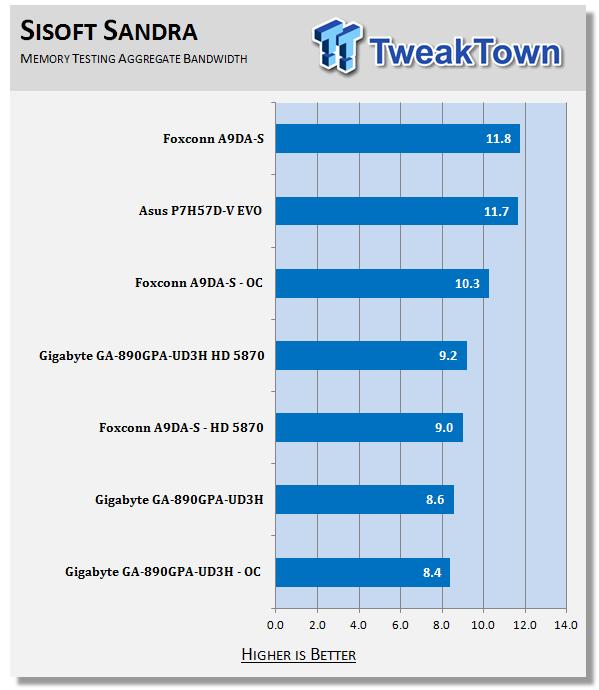
Foxconn squeaks by for the win here, but unfortunately drops quite a bit when we overclocked the system This is interesting as we had the memory pushed to 1600MHz, yet we still see a drop in performance of just over 1GB/s.
Everest Ultimate
Version and / or Patch Used: 5.30.1983
Developer Homepage: http://www.lavalys.com
Product Homepage: http://www.lavalys.com
Buy It Here
Everest Ultimate is a suite of tests and utilities that can be used for system diagnostics and testing. For our purposes here we use their memory bandwidth test and see what the theoretical performance is.
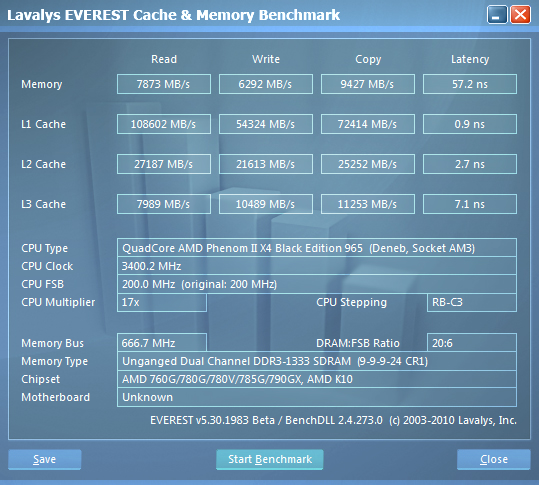
Stock Memory Performance
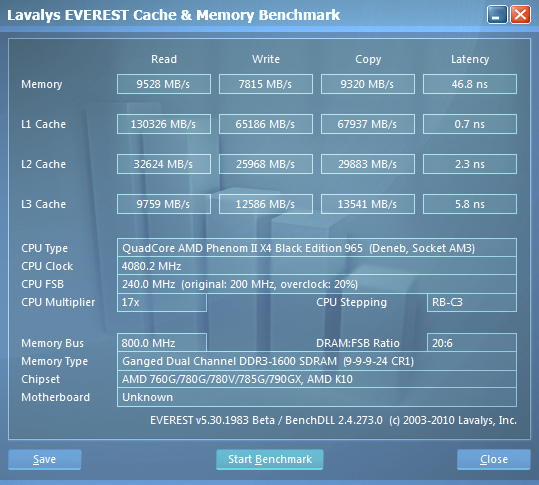
Overclocked Memory Performance
Ok, I am not sure how to read this one; in our Sandra testing we saw a drop in performance. However, in Everest we see an increase in available bandwidth and the memory clock is showing 1600MHz. Still, it does look like you are not really losing any memory performance when you overclock the CPU.
HyperPi 0.99
Version and / or Patch Used: 0.99
Developer Homepage: www.virgilioborges.com.br
Product Homepage: www.virgilioborges.com.br
Download It Here
HyperPi is a front end for SuperPi that allows for multiple concurrent instances of SuperPi to be run on each core recognized by the system. It is very dependent on CPU to memory to HDD speed. The faster these components, the faster it is able to figure out the number Pi to the selected length.
For our testing we use the 32M run. This means that each of the four physical and four logical cores for the i7 and the four physical cores of the i5 is trying to calculate the number Pi out to 32 million decimal places. Each "run" is a comparative to ensure accuracy and any stability or performance issues in the loop mentioned above will cause errors in calculation.
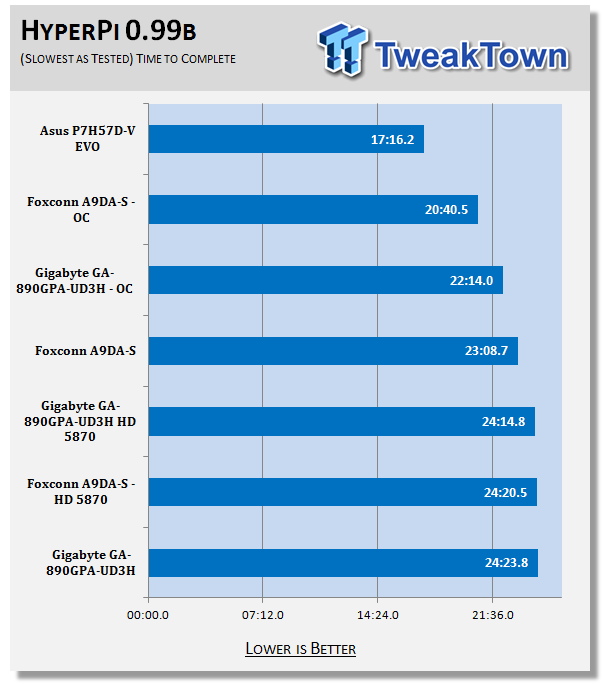
The Foxconn A9DA-S does an excellent job here; both the stock and the overclocked times are better than the competition. Unfortunately it is still not enough to catch the H57+ Core i5 661 system, though.
Synthetic Tests - Part II
Disk Drive Controller
The system drive controller is an important part of system performance. In most modern boards your drive controller will run off of the PCI-e bus. The PCI-e bus performance can be affected by poor trace layout as well as many other design choices that show up on different boards.
For testing we use Sisoft's Sandra and Everest.
SiSoft Sandra
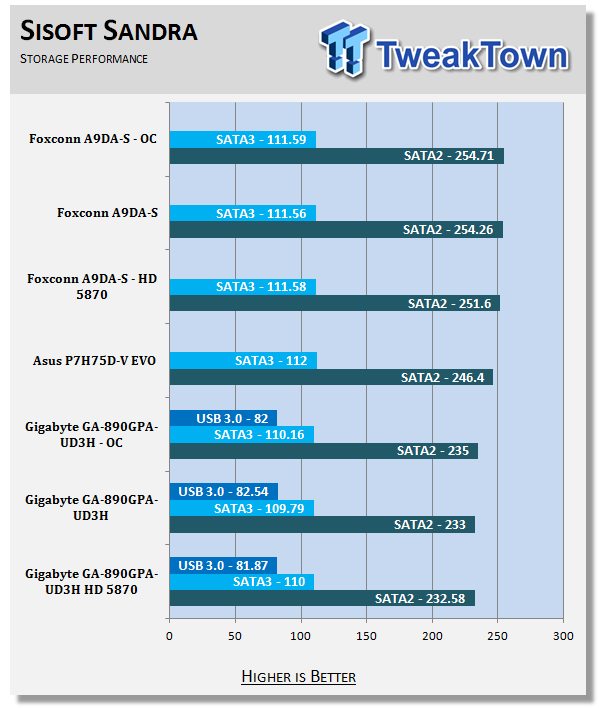
The HDD speeds we see in Sandra are impressive. The Foxconn A9DA-S out runs the competition including the H57 from Intel.
As a side note, we have been asked why our SATA 3.0 scores are so much lower; this is because we are using an Intel X25 SSD for our SATA II testing and a Seagate Barracuda XT HDD (traditional spindle/magnetic media) for our SATA 3.0 testing. Once we have access to a SATA 3.0 based SSD we will add this into our future motherboard reviews.
Everest
Stock HDD Performance
Overclocked HDD Performance
Drive speed testing under Everest shows us pretty much the same thing that Sandra does with a little more detail.
Synthetic Tests - Part III
Here is where we dig out the FutureMark tests.
PCMark Vantage
Version and / or Patch Used: 1.0.0.0
Developer Homepage: http://www.futuremark.com/
Product Homepage: www.futuremark.com
Buy It Here
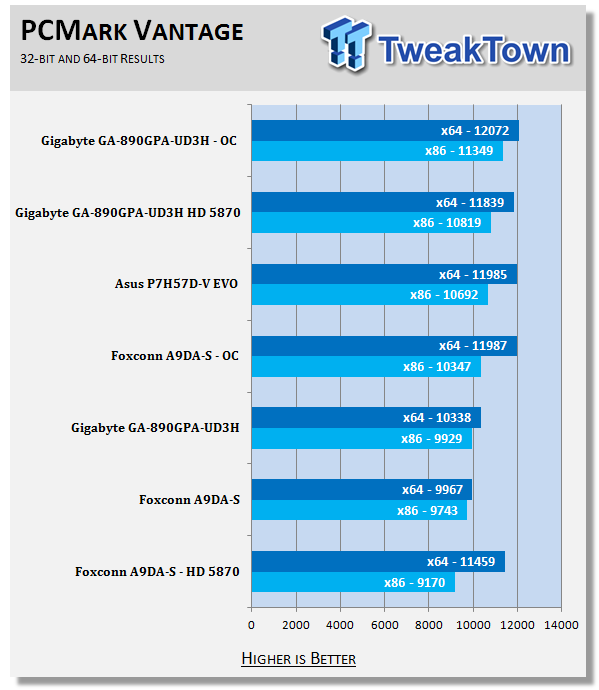
PCMark is where we see our first indication that the performance on the A9DA-S might not be up to par. The x86 performance was simply terrible, while the x64 performance was only slightly faster than the other boards in our test group when we used the HD 5870 and while overclocked.
3DMark Vantage
Version and / or Patch Used: 1.0.1
Developer Homepage: http://www.futuremark.com/
Product Homepage: www.futuremark.com
Buy It Here
For synthetic gaming tests we used the industry standard and overlockers bragging tool 3DMark Vantage. This is a test that strives to mimic the impact modern games have on a system. Futuremark went a long way to change from the early days of graphics driven tests to a broader approach including physics, AI and more advanced graphics simulations.
3DMark Vantage uses the DX10 API in addition to having support for PhysX. Due to the PhysX support and our use of an NVIDIA GPU, we run with PhysX enabled and disabled to give you the best indication of real system performance. For testing we use the Performance test run.
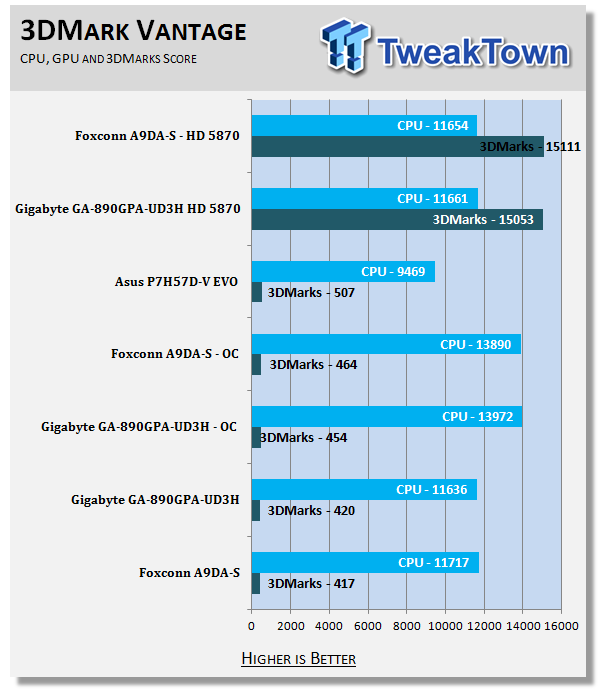
3DMark Vantage also shows us some troubling numbers. We see that at stock the IGP (but not the CPU) performs a little worse than the other boards in the group. However, when we drop in the HD 5870 or overclock the CPU we get a nice pickup in performance and the A9DA-S actually tops out the group with the HD 5870 installed.
Cinebench R11.5 x64
Version and / or Patch Used: R11.5
Developer Homepage: http://www.maxon.net/
Product Homepage: www.maxon.net
Download It Here
Cinebench is a synthetic rendering tool developed by Maxon. Maxon is the same company that developed Cinema4D, another industry leading 3D Animation application. Cinebench R11.5 x64 tests your systems ability to render across a single and multiple CPU cores. It also tests your systems ability to process OpenGL information.
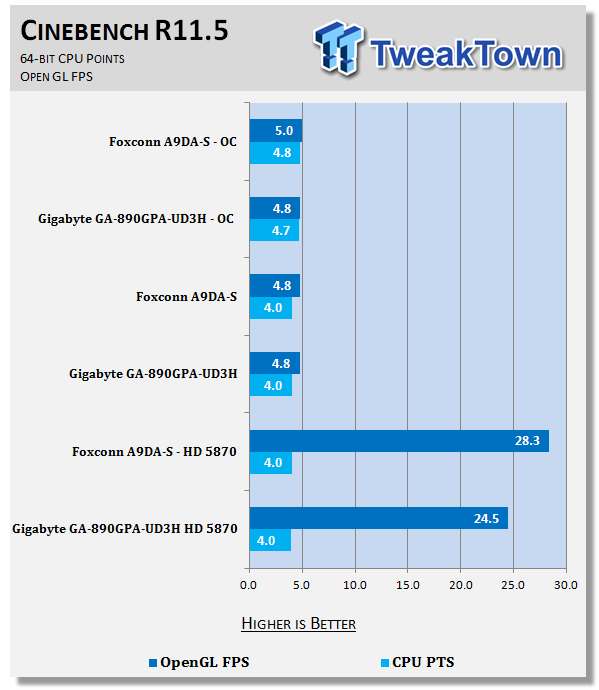
The Foxconn performs on par with the GIGABYTE 890GX here. However, when we push the system we see it win by a small margin for both CPU and Open GL performance.
Real-World Tests - Part I
Real-world testing allows us to see how well a product will perform when used in the same manner as it would be in your house or office. It is an important side to performance testing as it can uncover hidden glitches in the way a product performs.
It is especially true when testing a mainboard; there are so many components of a board that have to interact that any problems between parts can cause a failure of the whole.
For real-world testing we use some common applications and functions. We test with LightWave 3D for rendering performance, AutoGK for transcoding from DVD to AVI and two games for gaming testing.
Rendering
Rendering of 3D Animation is a system intensive endeavor. You need a good CPU, memory and HDD speed to get good rendering times. For our testing we use LightWave 3D. This software from Newtek is an industry standard and has several pre-loaded scenes for us to use.
LightWave 3D
Version and / or Patch Used: 9.6
Developer Homepage: http://www.newtek.com
Product Homepage: http://www.newtek.com/lightwave/
Buy It Here
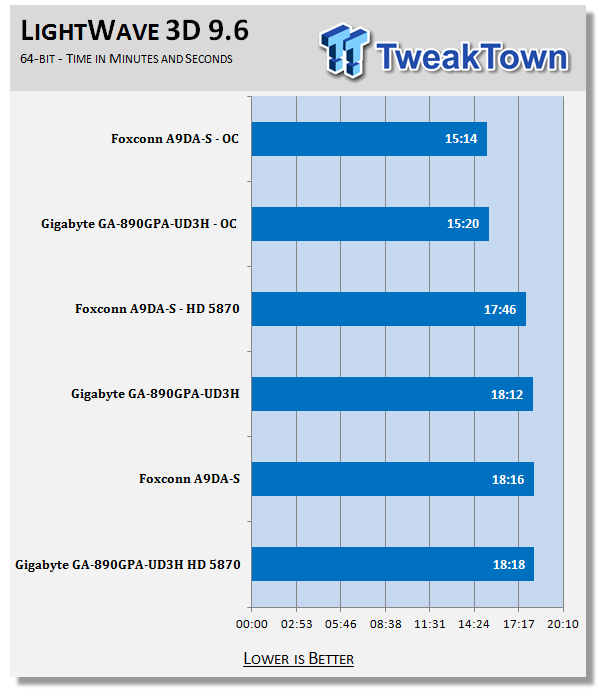
The rendering performance we are seeing here is pretty good. True, at stock speeds it is behind the GIGABYTE 890GPA, but take a look at what we get when we drop in a GPU or we push the CPU. Here is when the Foxconn really shines.
AutoGK
Version and / or Patch Used: 2.55
Developer Homepage: http://www.autogk.me.uk/
Product Homepage: http://www.autogk.me.uk/
Download It Here
AutoGK stands for Auto Gordian Knot; it is a suite of transcoding tools that are compiled into an easy to install and use utility. It allows you to transcode non-protected DVDs and other media to Xvid or Divx format. For our testing purposes we use a non-DRM restricted movie that is roughly 2 hours in length. This is transcoded to a single Xvid AVI at 100% quality.
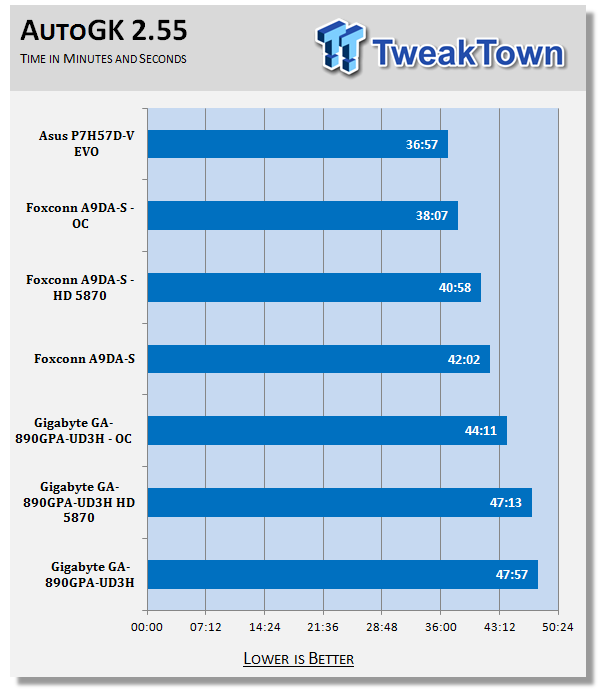
Wow, the Foxconn A9DA-S is a great AMD system for transcoding. True, it is still not as fast as the Intel based system, but it gives us some really good results here.
Real-World Tests - Part II
Here we have our real gaming tests. Each of the games we chose use multiple cores and GPUs. They are able to stress the system through use of good AI. Both have decent positional audio that adds impact to the sound subsystem of the board. We ran each game through the level or parts listed and recorded frames per second using FRAPS. This brings the whole game into play.
As most IGPs are not meant for high-end gaming, we have swapped out one of our First Person Shooters for a more mainstream game. We have also adjusted down the testing resolution from 1920x1200 to 1280x960. In order to keep full measure of the board, we return to 1920x1200 when we test the board with our HD 5870.
SIMS 3
Version and / or Patch Used: 1.0
Timedemo or Level Used: Ten Minutes of Game Play in Sunset Valley
Developer Homepage: http://www.ea.com/
Product Homepage: http://www.thesims3.com/
The SIMS 3 is the third complete edition of this popular game. In it you create a personality for use in a virtual world. The town we chose was Sunset Valley; we created a basic character and off we went. We performed as many actions as we could to give the board and GPU as much to think about as possible. The settings we used are shown below.
Settings for IGP testing at 1280x960
Settings for the HD 5870 testing at 1920x1200
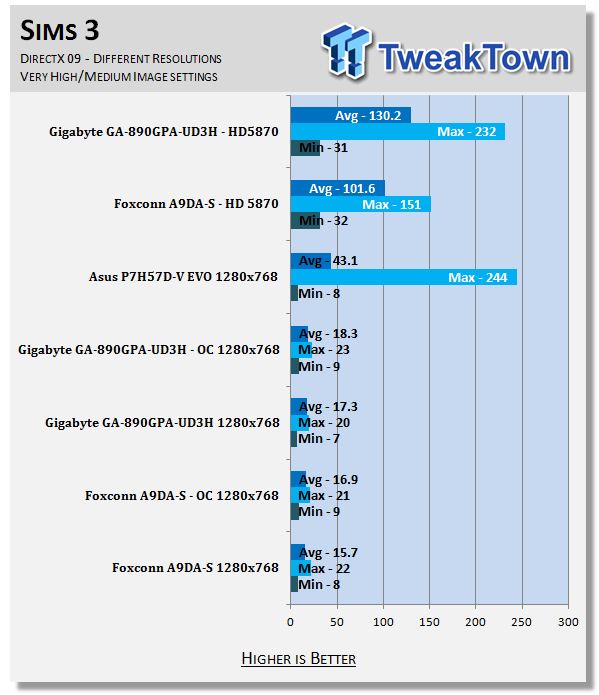
Overall, the gaming performance of the HD 4290 is not that great; this is even more pronounced on the Foxconn A9DA-S.
Far Cry 2
Version and / or Patch Used: V1.00
Timedemo or Level Used: Clearing the Safe house through to the Rescue
Developer Homepage: http://www.ubi.com
Product Homepage: http://farcry.us.ubi.com
Far Cry 2 is a large sandbox style game. There are no levels here so as you move about the island you are on you do not have to wait for the "loading" sign to go away. It is mission driven so each mission is what you would normally think of as the next "level".
In the game you take the role of a mercenary who has been sent to kill the Jackal. Unfortunately your malaria kicks in and you end up being found by him. Long story short, you become the errand boy for a local militia leader and run all over the island doing his bidding. The settings we used for testing are shown below.
Settings for IGP testing at 1280x960
Settings for the HD 5870 testing at 1920x1200
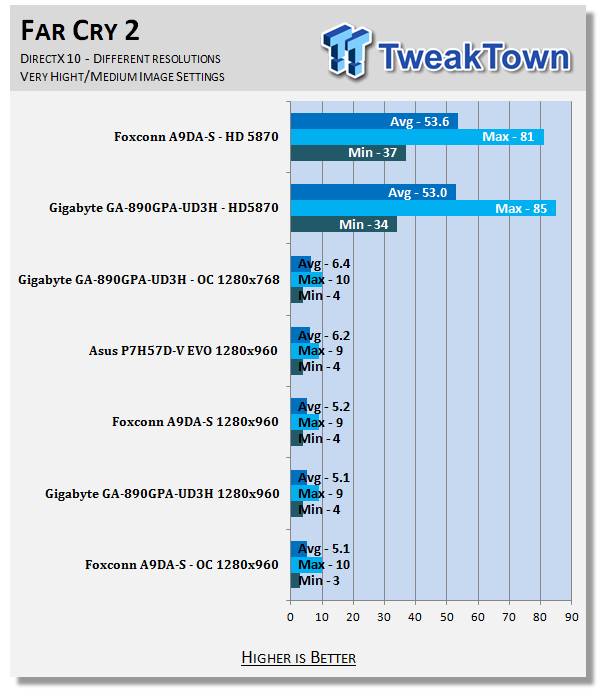
Again we see why boards with an IGP are not really suited to high-end gaming (and why they are not marketed that way by anyone except perhaps NVIDIA).
Gaming Conclusion
As we have noted on more than one occasion, the AMD HD 4290 is not that great of a performer when it comes to gaming. Even in lower end games like the SIMS it struggles and the settings have to be greatly reduced. You can get some fairly decent casual gaming done on the HD 4290, but for anything more demanding you are going to have some issues.
Despite our qualifying this and saying that IGPs are not good for high-quality, high-end gaming, we have had multiple people state that you can run games like Far Cry 2 and others on the HD 4290. Well, this is true; we did it using DX9 at 800x600 with everything on low and managed to get an average frame rate of just under 28 FPS. To do this we ended up with a game that looked terrible, even on a 17-inch display.
I know I would not spend $50+ on a game to have it look like that...
Power Usage and Heat Tests
Power Consumption
We are now able to find out what kind of power is being used by our test system and the associated graphics cards installed. Keep in mind; it tests the complete system (minus LCD monitor, which is plugged directly into an AC wall socket).
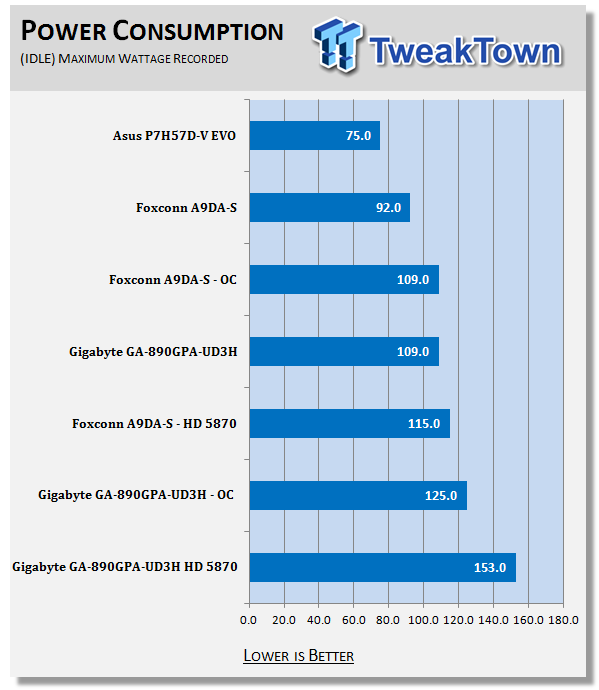
Power draw from the wall on most systems has gotten much better despite the fact that components are getting more greedy for voltage. Many manufacturers are putting in power management systems that really can drop down the idle power needs pretty significantly. In this regard the Foxconn A9DA-S does very well.
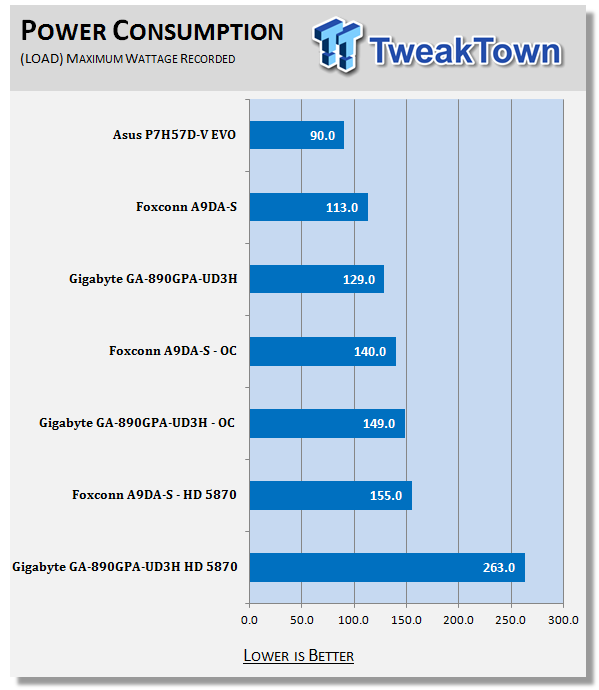
The power draw from the wall under load is also pretty good here. It is still not as low as the Intel system, but then again, we are using a 140 Watt CPU in the AMD system which puts things into a different ball game.
Heat Generation
As a new measure, we are now monitoring the heat generation from the key components on the motherboard; this being the Northbridge, Southbridge (if it contains one) as well as the Mosfets around the CPU. The results are recorded at idle and load during the power consumption tests.
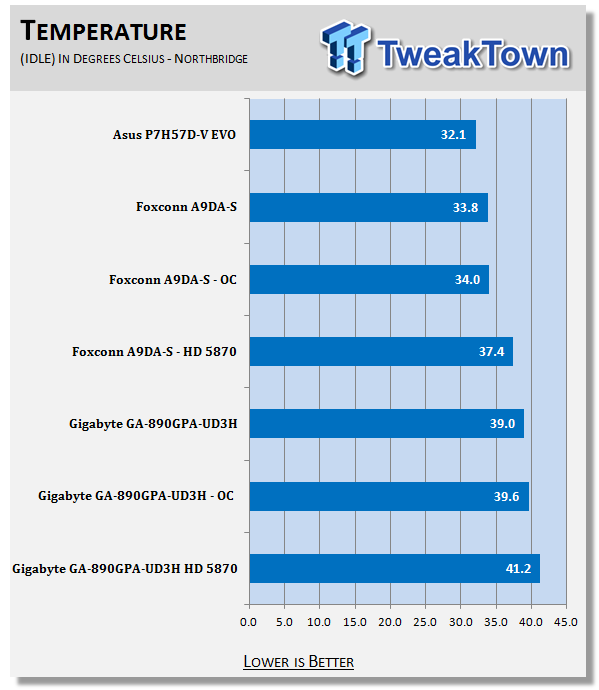
The heat generated by the Foxconn A9DA-S is very minimal. Maybe the fancy heatsink is actually doing something besides looking good.
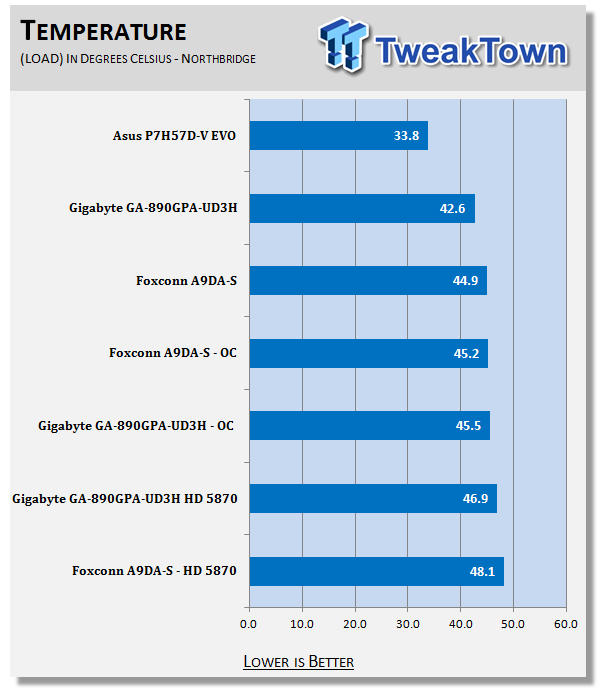
Even under load we see that the A9DA-S can keep the Northbridge cool.
Final Thoughts
The Foxconn A9DA-S is a surprising little board. I was quite pleased with its overall performance despite the poor showings from both of the FutureMark tests. The layout was done well despite some of the limitations of the ATX form factor (and the continued use of the ZIF socket).
IGP based gaming was something of a letdown, but we saw that with a discrete GPU we could correct that. One thing to note here is that we did not see any general performance issues when we have the HD 5870 in the system. This was present on two other boards we have tested, but did not show up on the A9DA-S. Bear in mind that this is not a "performance" board. It is a mainstream entry into the 890GX market.
Even with this market focus, the board performed amazingly well. It would be a great board for a HTPC or, when combined with a HD 5670, a fast and inexpensive gaming system that allows good performance at decent resolutions (including DX11 games) at what we hope will be an excellent price point.
Unfortunately, at the time of this writing we do not know what the retail prices will be, but we imagine that this board should come in under the $150 to $160 price we have seen from ASUS and GIGABYTE.

